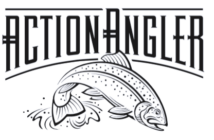By Austins Williams – Trout Unlimited’s Alaska Forest Program Manager
For those who have never been, the Tongass National Forest in Southeast Alaska offers unique and unparalleled opportunity. Its rivers and streams—stacked thick with wild salmon, steelhead, Dolly Varden and coastal cutthroat—are an angler’s paradise. But, they not only provide seemingly unending opportunity for the angler who’s willing to leave the beaten path, they also provide the life blood for local communities, many of which still rely on traditional and subsistence lifestyles. Fishing and hunting isn’t just recreation here: it’s how many people in rural Southeast Alaska put food on their plate and support their families.
All told, salmon and trout are a billion dollar industry in Southeast Alaska and employ more than 7,200 people—about one in 10 residents. The Tongass is a highly productive landscape, producing about one-third of Alaska’s overall salmon harvest from less than five percent of the land. When you add in the growing tourism industry, which also contributes nearly $1 billion to the Southeast Alaska economy and provides about 20 percent of overall employment, it becomes clear that healthy salmon runs, clean water, and wild landscapes are economically and culturally vital to the region.
Southeast Alaska is also a region of change. Not long ago, management of the 17-million-acre Tongass National Forest, which encompasses a large majority of the region’s land base, was dominated by large-scale, 50-year-long timber contracts where fish and wildlife took a back seat to getting out the cut. While the Tongass is increasingly recognized as a salmon forest, vital to the region’s fishing and tourism industries, this coastal rainforest remains under constant threat from a vocal and politically influential minority and a governor’s office determined to roll back important protections for salmon and trout under misguided attempts to return to a bygone era where unsustainable industrial logging was the norm.
A recent example of this is the Parnell administration’s Timber Task Force, which not long ago unveiled a proposal to carve out two million acres of the Tongass for clear-cut logging under a state-managed “logging trust.” The stated goal is to revive Southeast Alaska’s timber industry that collapsed two decades ago amid changing market conditions, logging cutbacks and evolving public opinion about timber harvesting on national forests.
While Trout Unlimited supports sustainable resource development, any attempt to turn back the clock, roll back important protections for salmon streams, and return to the days of industrial-scale logging in the Tongass—home to one of the country’s healthiest and most productive salmon fisheries—should be a complete non-starter.
Rather than seeking a return to the days when timber and federal subsidies were king on the Tongass, with hundreds of millions of board feet logged annually at huge financial losses to taxpayers, we should promote the existing fishing and tourism industries in Southeast Alaska that create huge economic returns for the region and the healthy forests required to sustain them.
One way to do that is by supporting the Tongass 77 campaign, an effort led by fishermen and supported by scientists that would require the Forest Service to manage the Tongass’ top 77 salmon-producing watersheds, which currently are open to development, for fish first. The Tongass 77 is about protecting fishing jobs and the outstanding sport fishing opportunities the Tongass affords. It’s about keeping watersheds intact so that Southeast Alaska salmon may continue to return year-after-year.
This is not a question of pitting one industry against another. A sustainable wood-products industry can coexist in the Tongass without sacrificing salmon-producing watersheds. We don’t need to hand over 2 million acres of the Tongass to the state and supplant important federal protections for salmon such as stream buffers with inadequate state standards. We need to make it clear to the Forest Service that it should support Southeast Alaska’s small businesses and create a favorable climate for new entrepreneurs to invest in the region by offering innovative stewardship contracts and small timber sales that are tailored to strike a careful balance between habitat conservation, forest restoration and some logging. As the Tongass moves into the 21st century, we should promote existing and emerging industries such as fishing and ocean products, visitor services, and renewable energy instead of sacrificing the region’s economic drivers to an ill-conceived 2 million acre give away.
Instead of futilely trying to re-create one industry at an unsustainable scale, we need to speak up and make sure state officials regard the Tongass for what it really is—a salmon forest that employs thousands of fishermen and seafood processors, as well as provides jobs to guides, tourism operators, loggers and miners.
The Tongass 77 is a balanced approach to moving forward and giving Tongass wild salmon the status they deserve. This initiative would place 1.9 million acres of the Tongass—77 of the highest-value salmon and trout watersheds currently open to development—into a fish-focused conservation status. This isn’t an environmental issue—it’s a jobs campaign. It’s about protecting an existing wild resource that contributes billions of dollars to the regional economy and sustains thousands of good-paying jobs. To learn more about this proposal and how you can support the Tongass 77, visit www.americansalmonforest.org.




2 Comments
Nice article. The first link (tongass national forest) ends in a 404.
Mark,
Sorry about the broken link. It’s now fixed.
tim romano